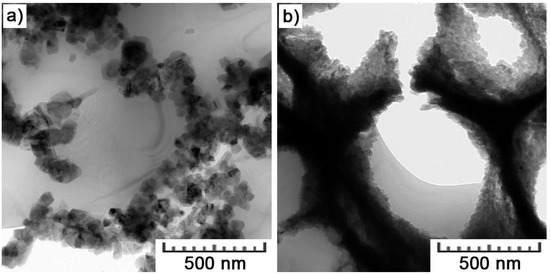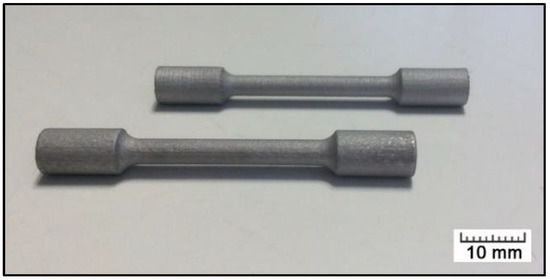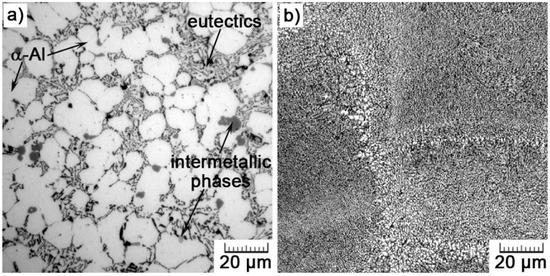Additive manufacturing has, in many studies, been compared with traditional manufacturing techniques like, for example, injection molding. In a study entitled “The Use of Selective Laser Melting to Increase the Performance of AlSi9Cu3Fe Alloy,” a group of researchers compared parts made with 3D printing to parts made with die casting, using the same material.
Aluminum and its alloys have an excellent strength to weight ratio, and AlSi9CuFe is frequently used in the automotive industry because of its mechanical strength. It is easy to machine and is usually processed by high pressure die casting, but the method has its imperfections.
“High-pressure die casting (HPDC) enables high production volumes of parts showing high surface quality,” the researchers state. “Compared to gravity casting, even more complex shapes are possible to be produced, but still, the current demands for porous structures or very small dimensions are hardly attainable. Additionally, the HPDC process is limited by the formation of defects, such as oxide films, shrinkage cavities, air porosity, etc., which cannot be eliminated. Such defects then weaken the castings structurally and exclude them for use in the field of safety applications.”
Therefore, the researchers conducted a study in which SLM 3D printing and high pressure die casting were used to produce parts using the same alloy. They then compared the properties of the parts. Porosity was examined in the samples, and transmission electron microscopy was used to observe nanoscale microstructural features. Uniaxial tensile tests were conducted, as were compressive tests and hardness measurement. Fracture surfaces were studied using scanning electron microscopy.

TEM bright field images obtained in the area of (a) a melt pool boundary and (b) a melt pool interior.
“Compared to as-cast microstructure consisting of α-Al dendrites and lamellar Al-Si eutectics, SLM yields in hierarchically heterogeneous microstructure,” the researchers conclude. “Grains are arranged in melt pools representing material melted and solidified by single laser tracks in the direction of the highest temperature gradient. They exhibit very fine cellular substructure in which the cells of α-Al solid solution oversaturated in Si and Cu are separated by eutectic network formed by cubic particles of pure Si, here 30–70 nm in size.”
The 3D printed parts showed a very fine microstructure, and overall, the parts produced by additive manufacturing exhibited greater strength than those produced by die casting, as well as greater plasticity. This is notable because it shows that 3D printing can overcome the strength-ductility tradeoff that is present in so many metals and alloys. The researchers conclude that 3D printing can improve the performance of the alloy compared to high pressure die casting, as well as produce more complex and lightweight structures, opening up new applications.
This study is another example of how 3D printing can improve upon traditional manufacturing techniques. 3D printing is often hailed for its ability to speed up production, save money, and produce more complex and lightweight components than traditional manufacturing, but the researchers’ study shows that the very microstructure of 3D printed materials can be superior to that of the same materials fabricated in a traditional way.
Authors of the paper include Michaela Fousova, Drahomir Dvorsky, Marek Vronka, Dalibor Vojtech and Pavel Lejcek.
Discuss this and other 3D printing topics at 3DPrintBoard.com or share your thoughts below.
Subscribe to Our Email Newsletter
Stay up-to-date on all the latest news from the 3D printing industry and receive information and offers from third party vendors.
Print Services
Upload your 3D Models and get them printed quickly and efficiently.
You May Also Like
Heating Up: 3D Systems’ Scott Green Discusses 3D Printing’s Potential in the Data Center Industry
The relentless rise of NVIDIA, the steadily increasing pledges of major private and public investments in national infrastructure projects around the world, and the general cultural obsession with AI have...
3DPOD 260: John Hart on VulcanForms, MIT, Desktop Metal and More
John Hart is a Professor at MIT; he´s also the director of the Laboratory for Manufacturing and Productivity as well as the director of the Center for Advanced Production Technologies....
Etsy Design Rule Change Reduces Selection of 3D Printed Goods
Online marketplace Etsy has implemented a rule change requiring all 3D printed goods on the site to be original designs. The update to the site’s Creativity Standards states, ¨Items produced using...
E-Beam OEM Wayland Additive Partners with USC Racing to 3D Print Titanium Exhaust Collector
Every year, standards organization SAE International holds a competition called Formula SAE, in which students from both undergraduate and graduate programs design, build, and race small formula-style race cars. For...



































